Found an injured hedgehog
If you’ve found an injured hedgehog, you’re in the right place. Hedgehogs are nocturnal creatures, but you might see one during the day if their nest has been disturbed or they’re struggling to find food. However, seeing a hedgehog during full daylight can also be a sign that they’re sick or injured.
On this page you’ll learn how to identify a hedgehog in need, and how to help a hedgehog that’s sick, injured or distressed.

Jump to:
How to tell if a hedgehog is sick or injured
If you’re unsure whether or not a hedgehog is sick, injured or distressed, there are a few things to look out for. Check if the hedgehog:
- Has an obvious sign of injury, like a cut or broken leg.
- Is staggering, wobbly, walking in circles or seems lethargic (slow and sluggish).
- Has a large number of flies or ticks on or around it.
- Has any maggots or fly eggs on or around it.
- Doesn’t roll up or try to roll up when you approach it.
- Isn’t interested in food you’ve put out for them.
- Has green sticky, slimy or mucus-covered poop.
If the hedgehog is clearly sick or injured or seen out in the day during cold weather, follow our advice below.
Found a baby hedgehog
If you find a hoglet (a baby hedgehog) on its own during the day, especially in the colder months, it may need rescuing. Check the surrounding area to see if there are other hoglets around, as there are usually four or five in a litter, and they may all need your help.
If you’re unsure whether or not the hoglet is sick or injured, first watch from a distance, monitoring it for a couple of hours to see if its mother returns, and only intervene if the hoglet is one or all of the following:
- In immediate danger.
- Squeaking with eyes shut or huddled together with other hoglets in the open, without an adult nearby.
- Next to a dead adult.
- Less than 300g in weight (about the size of an apple) without an adult nearby.
- Out during the day when it’s very cold.
- Sick, injured or surrounded by flies.
The best thing you can do for a visibly sick or injured hoglet is take it to a vet.
What does a healthy hoglet look like?
In the autumn and winter
Hoglets born in late summer or the autumn might not have enough fat reserves to survive the long winter without some help. They’ll often have to forage for longer to find enough food, which is why you might see them out during the day.
Hedgehogs hibernate through the winter, but sometimes emerge to move their nesting sites, which is one reason you may see them out and about. They can also remain active into Novemeber and December if its a mild winter.
However, if you see a hoglet in cold, wintry weather, it may need your help.
The best way to work out if a hedgehog is healthy is by its size and weight. You can estimate a hedgehog’s weight without disturbing it by thinking about fruit…
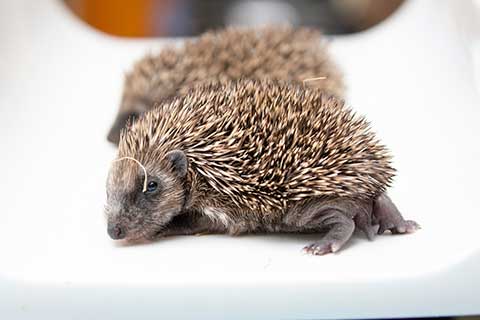
A hoglet that’s:
- About the size of an apple (weighing less than 300g) will need specialist care to survive the winter.
- About the size of a mango (weighing between 300g and 450g) AND is seen at night before mid-October will need supplementary feeding. Provide food in the garden, monitor its weight and if it hasn’t gained any visible weight – or it’s still around during colder weather – contact a vet or wildlife rehabilitator for advice.
- About the size of a mango (weighing between 300g and 450g) AND is seen after mid-October probably won't have enough weight to see it through the winter, so may need more help. Follow the British Hedgehog Preservation Society advice for autumn juvenile hedgehogs for how to help them over the winter.
- Larger than a mango (weighing over 450g) AND is only seen out at night should be healthy enough to hibernate as normal in the wild. It'll be foraging for food overnight so, if you can, keep providing food in the garden to help it store weight before hibernation.
- Young hedgehogs larger than an apple and seen at night are likely fully weaned and ready to be independent of their parents, so should be left alone.
autumn

Out during the day
It needs rescuing. Pick up with gloves or a towel, place in a warm box and take to a vet or call a wildlife rehabilitator.

Out at night
(size of an apple)
If it’s the size of an apple it won’t survive hibernation and needs specialist care.

Out at night
(size of a mango)
Before mid-October: Offer extra food and monitor it. If still underweight contact a vet or rehabilitator for advice. After mid-October: Follow the BHPS advice.

Out at night
(larger than a mango)
Healthy and can hibernate naturally. Keep feeding nightly until hibernation.
WINTER

Out during the day or night
Watch from a distance and offer it food. If it appears sick or injured, rescue immediately.
SPRING & SUMMER

Out during the day
Offer it food (meaty cat/dog food) and fresh water. Watch from a distance.

Out at night
(larger than an apple)
It’s probably weaned and independent. Leave it alone.

Sick, cold, injured
or covered in files
It needs rescuing. Pick up with gloves or a towel, place in a warm box and take to a vet or call a wildlife rehabilitator.
In the spring and summer
Found a hoglet during the summer months? If it's larger than an apple and out during the day, but isn’t obviously sick or injured, try offering it food and fresh water, watching from a distance to see if it eats, leaves, or has flies around it.
If you find a hedgehog that doesn’t eat or leave, is surrounded by flies, is clearly sick, injured or distressed – or ultimately you’re still concerned about it – here’s how you can help.
Make your garden safe for hedgehogs
Strimmer accidents, unchecked bonfires, open ponds or netting left lying around are all risks to a hedgehog’s safety. Find out how to turn your garden from a danger zone to a wildlife-friendly haven.
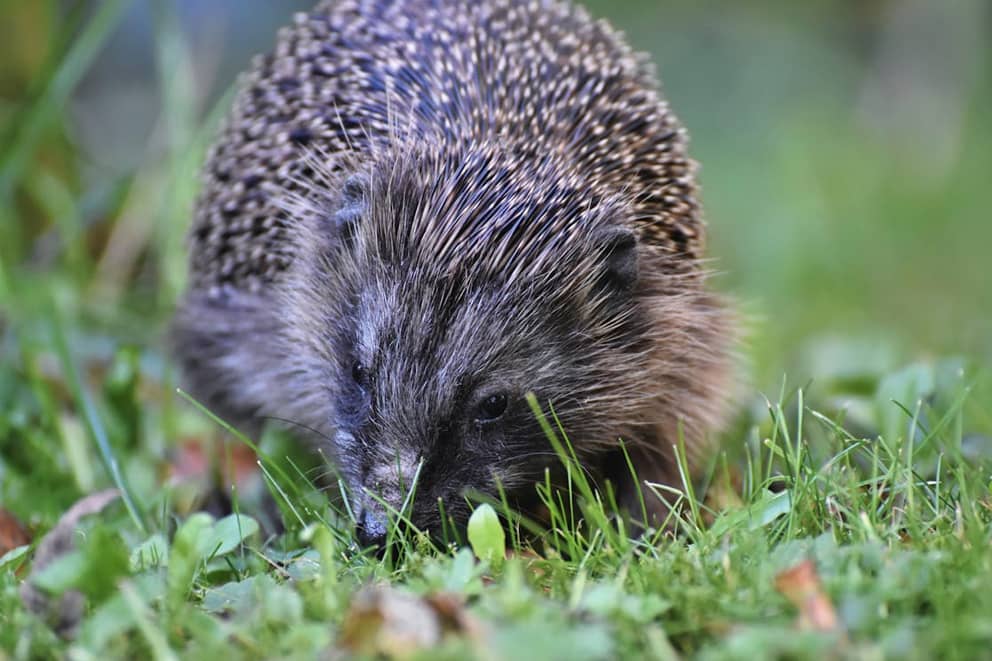
We want to empower the public to do their bit to help out hedgehogs. Together, we can make a kinder world for all animals.
What to do with an injured hedgehog
If you find a hedgehog that’s visibly hurt, or you spot signs that it might be sick or injured:
Take the hedgehog to the vet
Hedgehogs need specialised care due to their specific environment and dietary requirements, so take any injured or sick hedgehog you’ve found to the vet. Learn how to safely handle and transport a hedgehog below. If you can’t take them to the vet straight away, keep them somewhere warm and quiet, offering them water and meaty cat or dog food, until you can.
Reach out to a local wildlife rescue centre
If you’re unable to get the hedgehog to a vet, or it doesn’t look sick or injured but you’re still concerned about it, there are lots of local wildlife rescue centres across the UK – including one of our four Wildlife Centres – that can offer help or advice. Reach out to one near you for advice.
Handling a hedgehog?
Don’t put yourself at risk to help an animal from a dangerous location, like a road, river, railway line or clifftop. Instead, report your concern.
How to handle a hedgehog
Follow our step-by-step instructions to handle a hedgehog without putting yourself at risk:
Instructions
- 1 Put the towel on the bottom of the box.
- 2 Put on the thick gloves/wrap the thick towel around your hands.
- 3 Approach the hedgehog slowly, then carefully pick it up with both hands, making sure to support the hedgehog’s weight with both your hands. Hedgehogs or hoglets from the same litter can be kept in the same box, if it’s big enough.
- 4 Gather the hedgehog up with as much of its nest material as you can.
- 5 Keep the hedgehog away from your face as you place it into the box (with food and water if you can).
- 6 Close the lid of the box and make sure it’s secure.
- 7 Take off your gloves and always wash your hands.
- 8 Call your local vet to let them know you’re coming and check they’re available.
- 9 Meanwhile, keep the box in a quiet sheltered place, to keep the hedgehog calm.
- 10 Transport the hedgehog as soon as you can.
- 11 In the car, keep your windows open and turn your radio off so it’s nice and quiet.
Don’t handle the hedgehog for longer than you need to, as contact with humans will be stressful for them. And always wear gloves, as they can carry diseases like ringworm and salmonella bacteria, which can be passed to humans.
What you'll need
Thick gloves, such as gardening gloves (or thin gloves and a thick towel)
A towel (as big as a hand towel or bigger)
A box with air holes in – what we call a wildlife rescue box
Optional
A hot water bottle wrapped in a towel to put in the box, for warmth
A long-sleeved top to protect your arms
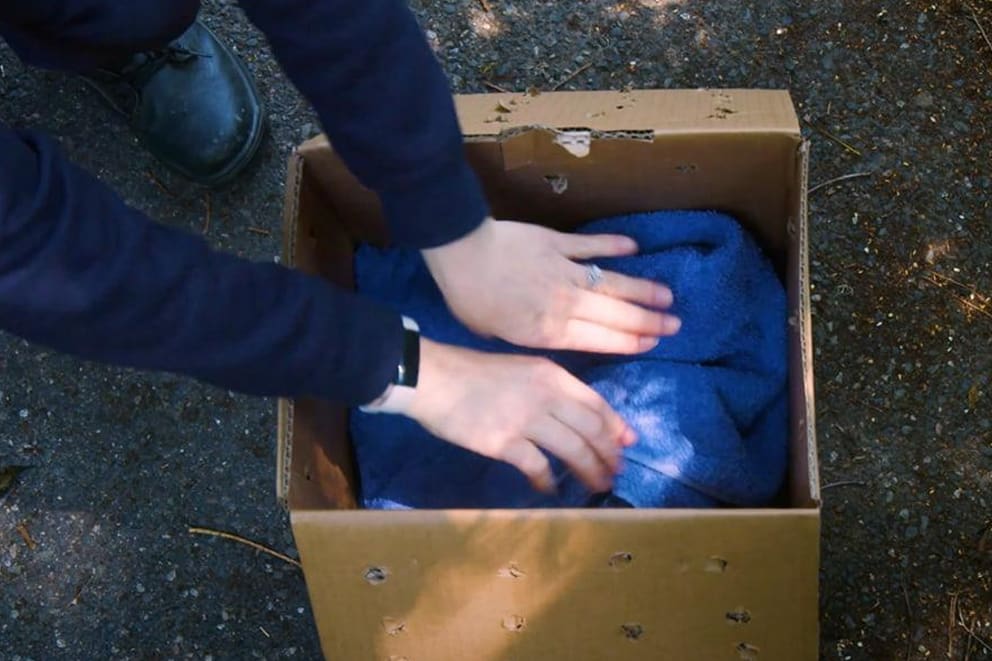
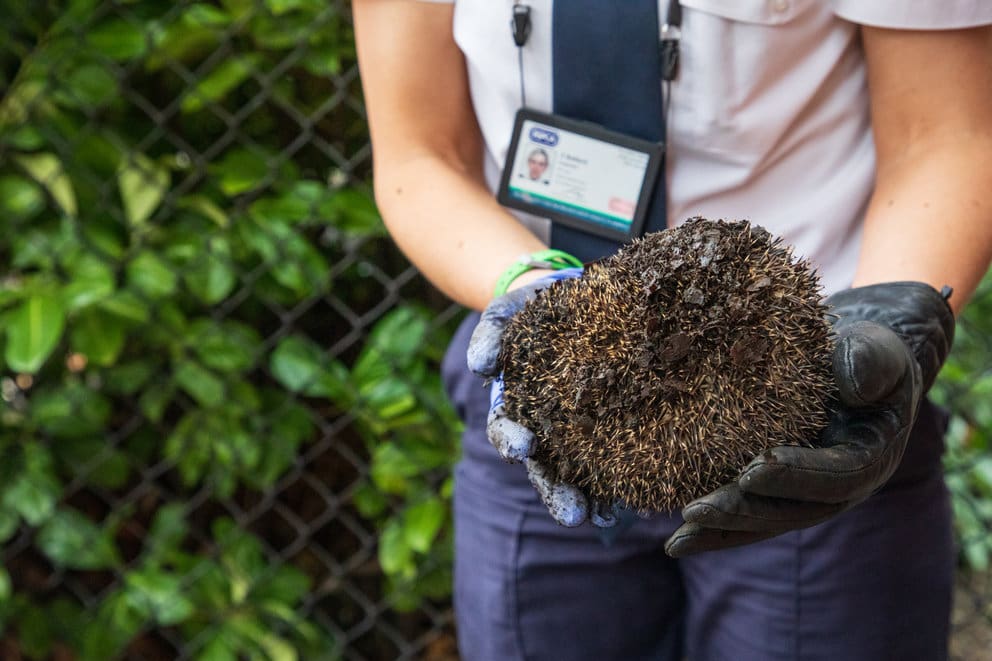
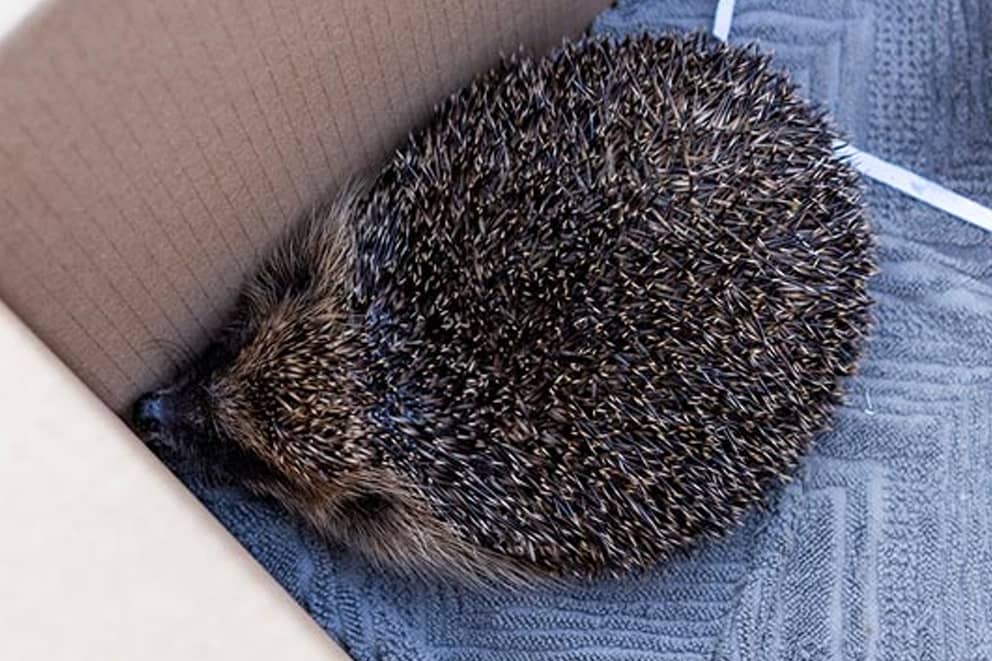
Found a dead hedgehog
Finding a dead animal can be sad and distressing – but there are still things you can do to help protect other wild animals.
If you find a dead hedgehog, please report it to the Garden Wildlife Health project, who then use the data to study and safeguard the health of British wildlife.
If you find one during the breeding season (from mid-April to September), watch out for any orphaned hoglets nearby. Any baby hedgehogs you find with the dead mother hedgehog will need urgent care and should be taken to a vet as soon as possible. See above for how to handle and transport a hedgehog.
The best thing you can do for a visibly sick or injured hoglet is take it to a vet.
Found another type of animal
If you’ve found a sick or injured wild animal that’s bigger than a rabbit or pet cat, is a farm animal, bird, stray dog, or an animal on the road, here’s what you can do to help:
-
There are extra measures you need to take, so check our website to find out.
-
Visit our website, or call us on 0300 1234 999.
-
Call the Animal Plant and Health Agency.
-
Call the police. On minor roads, call the police on 101. In certain circumstances, for example if you find a badger who appears uninjured and is on a motorway or A-road, call Highways England (0300 123 5000) or Traffic Wales (0845 602 6020) who will make arrangements for the animal to be removed. If they appear injured, call us on 0300 1234 999.
-
If you hit, or see somebody hit a dog, horse, cattle, pig, goat, sheep, donkey or mule, report the accident to the police.
-
Call the local council.
If in doubt, visit our website for advice.




